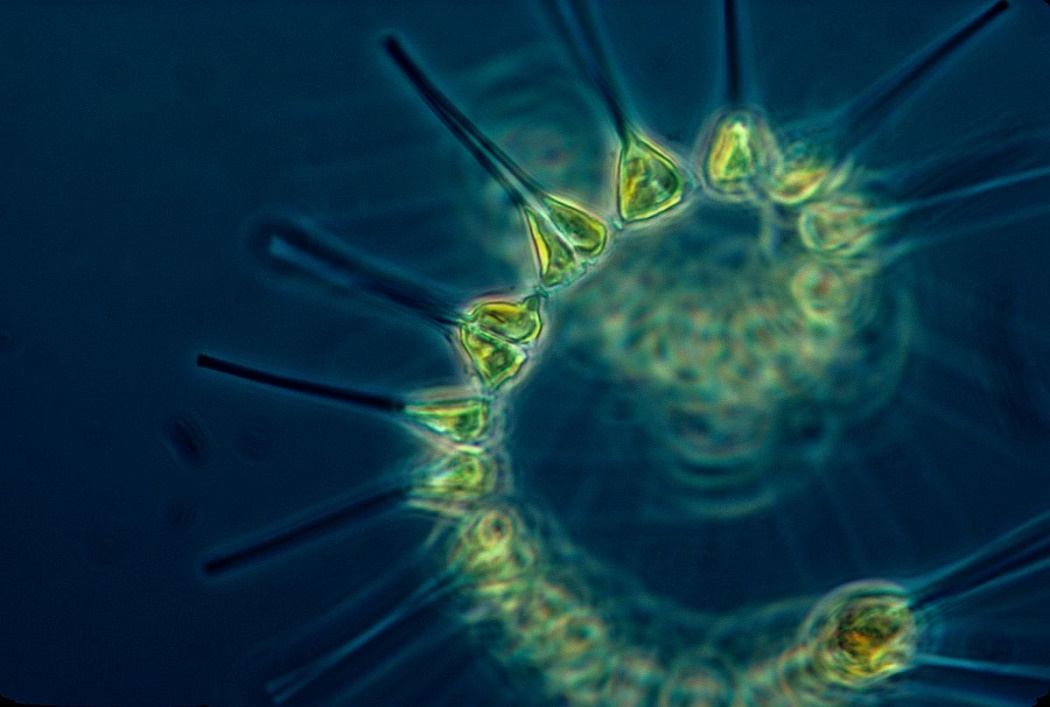An ocean’s deepest depths are usually portrayed as the site of its greatest mystery, but its shallows hold plenty of puzzles, too. Take, for example, the “paradox of the plankton”.
Phytoplankton are microscopic plants that bob along the upper layers of the ocean, soaking up light and basic nutrients like nitrogen and phosphorous. As organisms, they’re about as simple as it gets, yet their species diversity has puzzled scientists for years.
Theodore J. Smayda was one of the first scientists to characterize the geographic distribution of plankton species, worldwide. In his 1958 Oikos paper, he described a variety of species and the temperature and salinity conditions in which they thrived. A year later, he would begin weekly data collection in the Narragansett Bay, including population counts of phytoplankton species, along with measurements of temperature, salinity, and concentrations of nutrients in the bay. More on this in a bit.
Over the next few years, as even more species were identified, G. E. Hutchinson first outlined what he called the paradox of the plankton: “The problem that is presented by the phytoplankton is essentially how it is possible for a number of species to coexist in a relatively isotropic or unstructured environment all competing for the same sorts of materials.”
Essentially, why hasn’t one “fittest” species been able to out-compete the others into extinction? He goes on to say, “It is, of course, possible that some people with greater insight might have seen further into the problem of the plankton…”
And while it took over 50 years, and numerous technological advancements, these folks might have finally appeared. A team of scientists has recently discovered evidence that potentially explains the paradox—the different plankton species appear to have different ways of extracting the nutrients they need from their shared environment. So, while (the rather menacing sounding) Skeletonema metabolizes inorganic nitrogen dissolved in the water, (the more nobly named) Thalassiosira gets its nitrogen from organic molecules. In effect, they’re sharing resources at a more fundamental level than we were capable of seeing before, so competition is not as much of a driving force.
What’s particularly neat about this study, is how the scientists gained their insight—by combining relatively recent advances in RNA sequencing with the data that Theodore J. Smayda began collecting in 1959. Now known as the Narragansett Bay Plankton Time Series, it is one of the world’s longest running data series.
This discovery is a clear argument for the importance of sustained, long-term data collection (and its funding). This dataset has allowed us to expand our collective knowledge of phytoplankton—from a snapshot of geographical distribution, to a map of species over time—and gain important insight into the seasonal blooms and long-term population patterns of one of our most essential keystone species. Not to mention that it’s allowed us to solve an ecological puzzle that has stumped us for decades.







